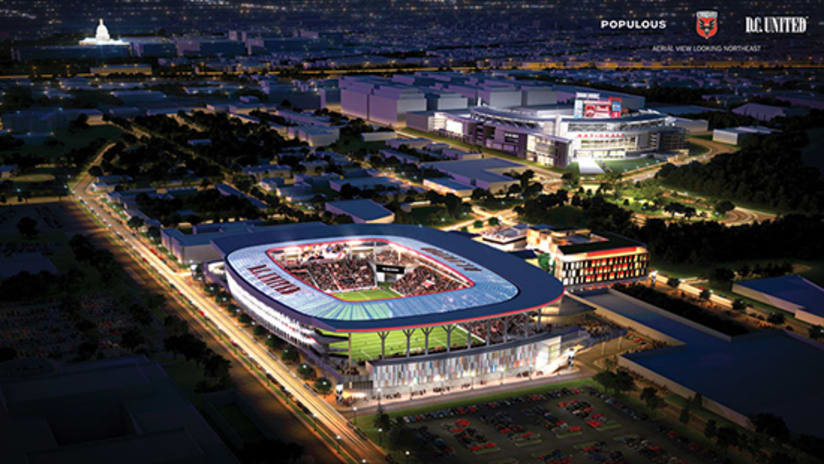On November 5, 2014, the Council released an independent economic evaluation of the proposed D.C. United Stadium Project. The Council’s economic evaluation confirms that the proposed D.C. United Stadium Project will be a smart investment for the District, generating major economic and fiscal benefits for the District, substantial job opportunities for District residents, and guaranteeing that D.C. United—a source of community pride for many District residents—will continue to call the District its home.
- The Stadium Project will generate substantial economic benefits for District residents. According to the Council’s study, over the next 32 years, the Stadium project will generate $2.6 billion in economic activity. This economic activity will create 1,683 new full-time equivalent jobs for District residents—good-paying jobs that otherwise would not exist absent the Stadium Project—and generate $1.3 billion in employee earnings.
- The Stadium Project will generate significant fiscal benefits for the District. According to the Council’s study, “it is anticipated that [fiscal] benefits [of the Stadium Project] would exceed costs by approximately $109.4 million.” This is a net benefit that the District would never realize without this development. The District can use this newly-generated revenue to invest in District schools, public safety, housing, and other initiatives that will improve the lives of District residents.
- The risks of this transaction are fewer and better controlled than at the same point in the development of the Nationals Ballpark and the Convention Center. Comparing the risks in this transaction to those present in Nationals Ballpark or the Convention Center, both of which are viewed in hindsight as highly successful endeavors, the risks in this transaction are far less.
- The Stadium Act will spur economic revitalization in a crucial part of the city. As the Council’s study acknowledges, a primary purpose of the project is to spur economic development along the Anacostia River. The Stadium Project will do just that, providing an enormous opportunity for the District to complete the revitalization of the Buzzard Point/Capital Riverfront neighborhood. Indeed, according to the study, “[a]bsent the stadium development no significant development [within Buzzard Point] is anticipated for 8 to 10 years at a minimum.” The transaction also contemplates the development of a new Reeves municipal center in Anacostia to replicate the economic development success of the original facility in the 14th & U Street corridor.
- The Stadium Project is a reasonable deal for the District and D.C. United. According to the analysis, the percentage mix of public and private funding for the Buzzard Point Stadium (public 46% and private 54%) is consistent with the average MLS soccer-specific stadium development. The property and sales tax abatements that would be provided to D.C. United under the terms if the lease agreement with the District would be unique in MLS, but do not provide D.C. United with a revenue advantage over its peer MLS teams. Even with abatements, D.C. United’s property tax burden is estimated to be the highest among MLS teams.
- The District based its land acquisition and asset disposal prices on “sound land values.” The report thus confirms that the District’s process for valuing the land—utilizing the property valuation method for eminent domain proceedings whereby three appraisers value the land and then reach a consensus—was a sound process.





